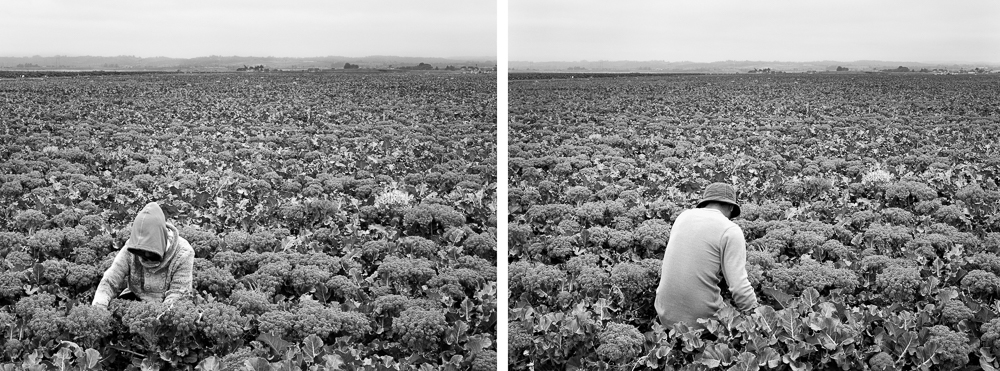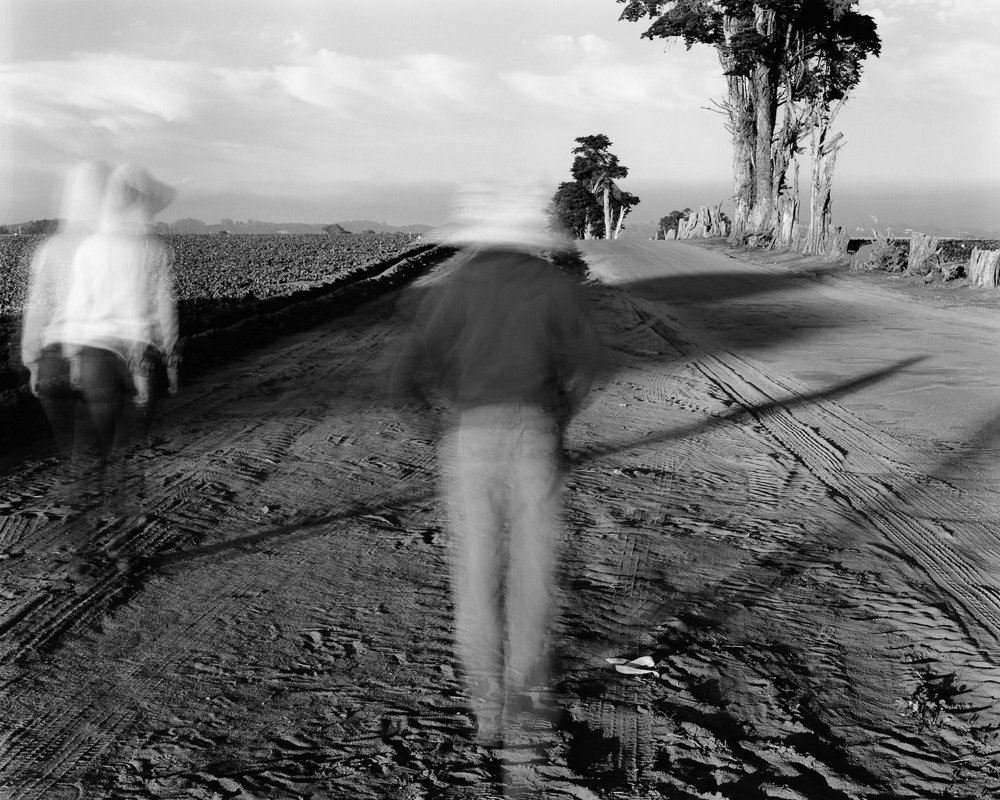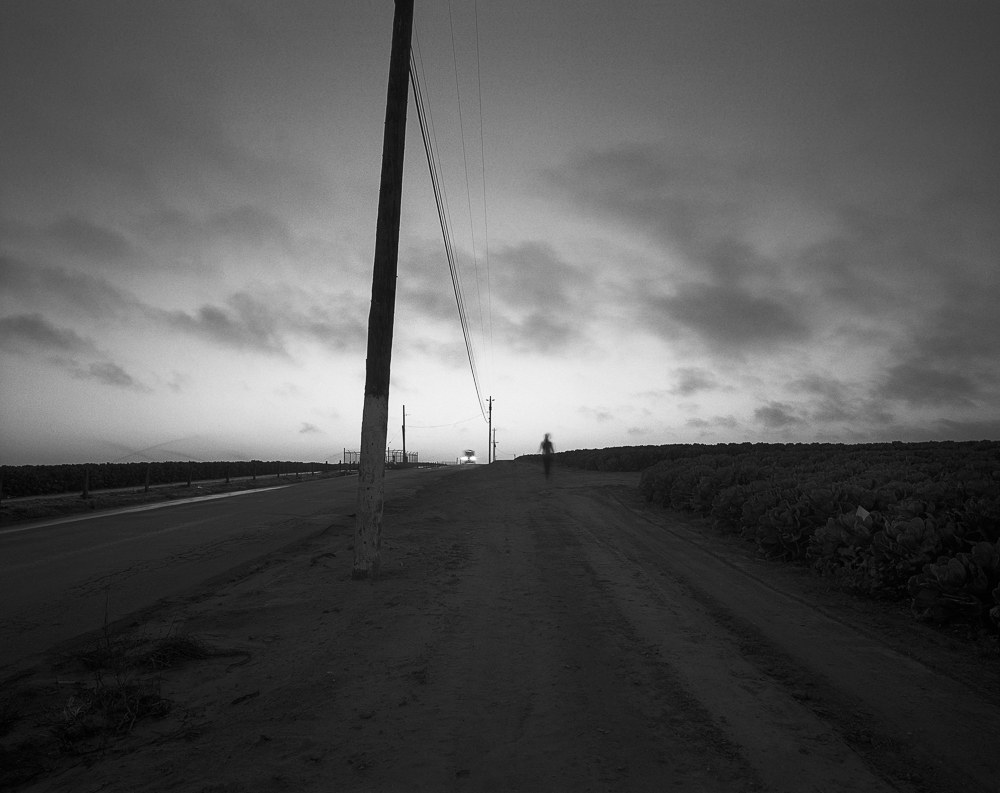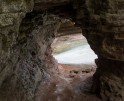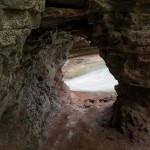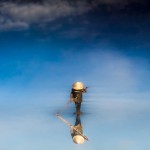Maria Isabel LeBlanc: De La Luz
A few miles inland from the Northern California coast is fertile ground for harvest. Driving through the towns of Gilroy, Salinas, and Watsonville, the scent of garlic and artichokes mingle with earth, ripe with potential. Photographer Maria Isabel LeBlanc has driven these roads on a daily basis, appreciating the beauty of the land. Her series, De La Luz, examines her own evolution of seeing: first the land as it speeds past the car window, then the recognition of the annual agricultural cycles that present ever changing vistas, and finally the dark shapes of the unseen population of migrant workers that make it all possible. In the end, the series is a love letter, shot in large format and created as pristine silver gelatin prints, of the miraculous bounty of the earth and the recognition of those who toil in that abundance.
Maria Isabel LeBlanc (1969) was born in New Orleans, Louisiana. Her practice investigates her relationship with the landscape, both as a documentarian and as a humanist. Her projects concentrate on a specific geographical region of Northern California, where the land provides markers of time and history. She works primarily with the large and medium analog process, working as sole craftsman from the moment the negative is exposed to the creation of the final silver gelatin print.
LeBlanc graduated with a BA in Romance Languages and an M.Ed. from the University of Georgia, Athens. After several years teaching English as a Second Language, she pursued photographic studies at the Atlanta College of Art.
LeBlanc is a first generation American and daughter to Cuban/Colombian parents. She has travelled extensively and lived in Saudi Arabia and England. She lives and works in Santa Cruz, CA.
De la Luz
De la Luz, “of the light”, refers to the special light I experienced when photographing out in the fields. The crops, and more, unfold under the sun in full view. A search for the American dream is played out under this light as well.
The blurs, glimpsed from my car window and streaking by, were fields. Within these streaks, I knew that I was seeing figures, bent over or running. From afar, just like the fields, they were blurred forms, certainly anonymous. I never slowed to take these views in until I decided to stop one day and look at these unexamined scenes, barely perceived.
The fields and crops, laid out in geometric patterns, stretched as far as the eye could see; nature taken and manipulated, oddly beautiful. These vast expanses gave me a sense of freedom. I began photographing the idyllic landscapes with a large format camera and though the fields were windy, they were quiet and patiently shared their space with me. The fields were full of people by day yet eerily empty in the late afternoons. This solitude was welcome. I kept returning.
I also noticed evidence of rapidly passing time, faster than the seasons. Multiple plantings at an expected pace and a continuous rotation of crops are made possible by the temperate climate. The seasons change by stealth, cloaked by the fog and breeze. One day the fields were abundant and the next day they lay barren, shredded stalks revealed.
The fields took on a new light when I began to photograph the people that worked these lands. The gathering of the crops requires literally back-bending physical labor and the days are long, starting at dawn. In several portraits, a cloth covers the face, or the person looks away. This reflects their often anonymous status in society, while also perhaps masking an underlying fear and uncertainty.
As my exploration deepened, a shift occurred. These open landscapes, stretching to the horizon, were deceiving in their simplicity. Within these geometric patterns, I now saw lines, borders, and boundaries. It became clear that the sense of freedom, peace, and tranquility that I felt when photographing these areas was a luxury. It was my perception, not universal, and not shared by the people to whom it should matter most, to those that worked the land. And time, which for me had seemed to pass so quickly here, in truth held its breath waiting for change.
Posts on Lenscratch may not be reproduced without the permission of the Lenscratch staff and the photographer.
Recommended
-
The 2024 Lenscratch 2nd Place Student Prize Winner: Ariana GomezJuly 23rd, 2024
-
Julianne Clark: After MaxineJuly 3rd, 2024
-
Kaitlyn Jo Smith: Super8 (1967-87, 2017), 2017June 30th, 2024
-
Josh Raftery: Start the Story at the EndJune 28th, 2024













